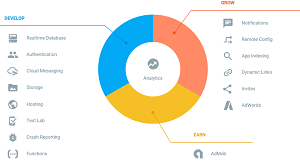News
Firebase Mobile Back-End Integrates Crashlytics
- By David Ramel
- November 1, 2017
Among a host of other improvements, Google's popular Firebase back-end solution for mobile app development is getting closer ties to Crashlytics, the equally popular crash-reporting tool it acquired early this year.
Crashlytics was added to the Google developer ecosystem when the search giant bought the Fabric development platform from Twitter. A central component of Fabric, Crashlytics often ranked highly in surveys and reports.
The tool aids in the real-time tracking, prioritization and fixing of stability issues that can degrade the UX in iOS and Android apps (and Web apps).
Since acquiring Fabric, Google has been working to integrate its crash reporting tool into Firebase, which is reportedly used by more than 1 million developers to support mobile apps by providing back-end server functionality such as database, cloud storage, authentication, analytics and much more.
That work has resulted in the addition of Crashlytics to the newly redesigned Firebase Console, mission control for working with supported mobile apps.
"We're also integrating Crashlytics with other parts of Firebase," Google said in a blog post yesterday. "You can now use Crashlytics events to trigger Cloud Functions and power custom workflow integrations. For example, you can automate a workflow to route issues in a critical app flow -- like your purchase path -- to a particular developer or Slack room, ensuring the proper escalations, reducing the time to resolution, and increasing stability."
 [Click on image for larger view.]
Firebase (source: Google)
[Click on image for larger view.]
Firebase (source: Google)
Along with the redesigned Firebase Console and Crashlytics integration, Google also announced other improvements to Firebase at the second annual Firebase Dev Summit in Amsterdam.
These include enhancements to the Firebase Cloud Messaging (FCM) API for sending notifications to users either through source code or via the console. Google said that process is easier and safer with a new RESTful HTTP v1 API.
Google also announced a new A/B testing framework in beta, which is integrated into Firebase Analytics, FCM and Remote Config, the latter of which lets developers change the behavior and appearance of apps without making users download an update.
Finally, the company introduced Firebase Predictions, which uses machine learning to help developers predict which users are likely to churn (drop an app), stay engaged with app, spend money or not, and so on.
Along with all these announcements, the Firebase team promised more, including preparing for the General Data Protection Regulation (GDPR) across the back-end solution. According to Wikipedia, the GDPR is intended to strengthen and unify data protection for everyone in the European Union.
About the Author
David Ramel is an editor and writer for Converge360.